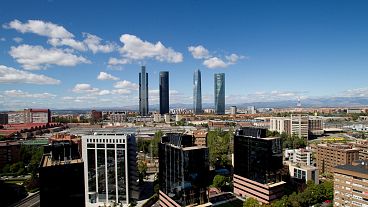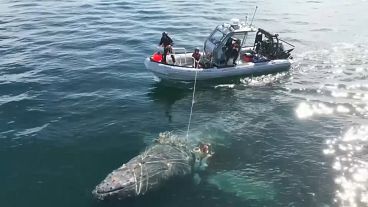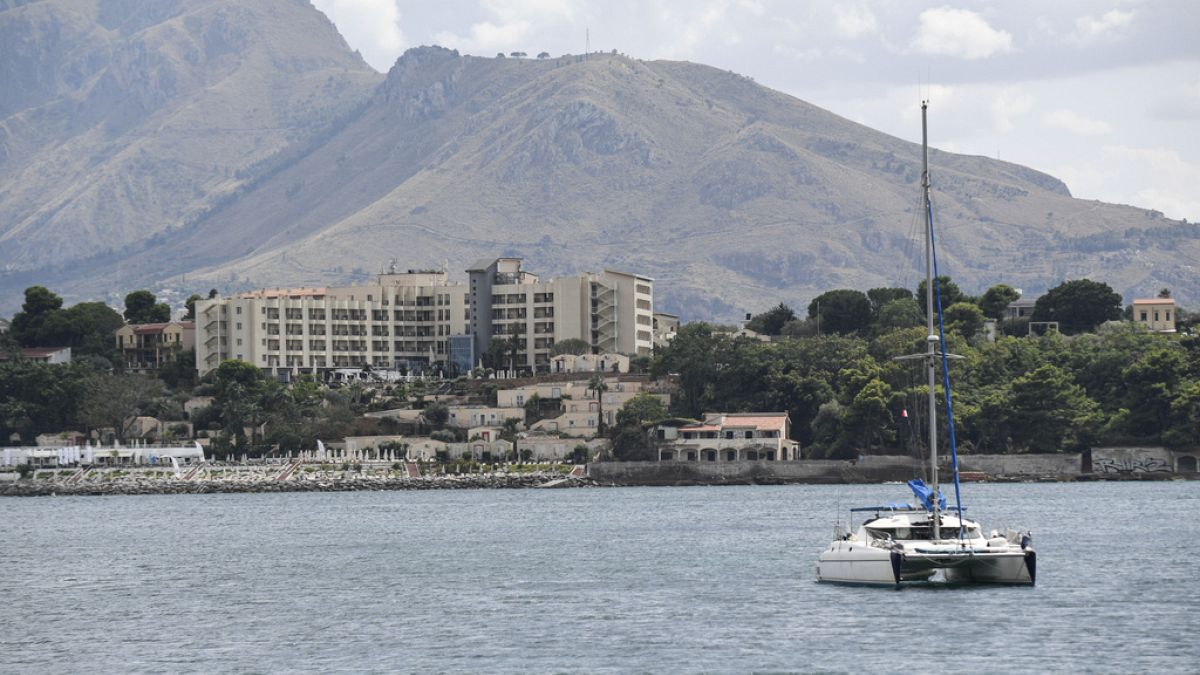While the search continues for one missing person from the shipwreck of the sailing vessel, questions are mounting about the accident’s causes and the still-unclear details of how it happened.
Five bodies were discovered on Wednesday in the search for six missing passengers and crew from the Bayesian, a superyacht that sank in a storm off the Sicilian coast early Monday.
Early on Thursday morning, the fifth body was recovered from inside the wreck of the sailing ship. None of them have yet been formally identified, but early reports say authorities are now only searching for a woman: Hannah Lynch, the 18-year-old daughter of British tech tycoon Mike Lynch who is among the deceased, according to the Italian coast guard.
There were 22 people on board, 10 crew members and 12 passengers. Fifteen were rescued, among them nine of the staff. The body of the ship's cook was recovered during the first search.
As the dive team continues its search for the remaining missing person, whose body is believed to be trapped in the cabins of the boat lying on its right side at a depth of 50 metres, the questions about the causes of the shipwreck of the sailing ship, the only boat to succumb that night, increase.
How did a 56-metre superyacht with a 75-metre aluminium mast (the tallest in the world), which experts say had everything it takes to withstand winds, lightning and walls of water, sink in a matter of minutes?
So far there is little information and even less certainty. The only visual evidence of the Bayesian's sinking comes from a video surveillance camera at a villa on the Porticello harbour, footage from which shows the mast of the sailboat disappearing in the darkness of the rapidly growing storm. According to the owner of the villa, the Bayesian sank in just one minute.
The survivors, who are being housed in a hotel not far from the port while waiting to be interviewed by the public prosecutor's office of Termini Imerese, which has opened an investigation, spoke of a gap of three to five minutes between the moment the boat was lifted by the waves and its sinking.
Neither the poor-quality video nor the little information provided by the survivors, who were in shock, have clarified exactly what happened.
The hypotheses on the causes of the shipwreck
What is understood is the nature of the bad weather that hit the area overnight Sunday into Monday.
Modern boats are normally built to high safety standards and are equipped with electronic navigation and communication systems, as well as emergency devices. They do not normally sink in bad weather.
Yet while a storm was expected, winds were higher than anticipated. What hit the sailing ship could have been a waterspout — a whirlwind that develops at sea, increasingly frequent in the Mediterranean due to rising water temperatures — or a downburst, a very strong gust of wind that comes ashore and then moves horizontally at a speed that can exceed 100 km per hour.
On Monday morning, a group of fishermen in Porticello said they saw a waterspout that lasted about 12 minutes. The greatest risk a ship faces when hit by a waterspout is that its mast will break.
The Bayesian's mast, capable of supporting 3,000 square metres of sails, was designed to withstand adverse weather conditions and had been serviced four years ago. However, the first hypothesis that was circulated was that the mast had broken, based on what was reported by the captain of the ship that brought the 15 rescued passengers to safety.
In this scenario, the mast breakage would have caused damage to the hull and resulted in the boat becoming unbalanced, tilting to one side and then sinking.
A source briefed on the investigation, however, told Corriere della Sera that divers who went down to inspect the wreck found the mast in one piece, with the boat intact — its hull unbreached, its hatches closed, its windows in place.
Alternative theories
An alternative hypothesis is that the speed and force of the water were so great that the Bayesian's onboard emergency system did not have time to "seal" the vessel when the water started to enter. Another possibility is that a gigantic wall of water lifted the ship from the stern, causing the bow to quickly point towards the seabed.
Meanwhile, the skipper of a vessel that was sailing close to the Bayesian during the storm has suggested the combination of the strong winds and the vessel's high "windage" — that is, the large surface area exposed to the wind — would have thrown the superyacht off balance, causing it to take on water.
There's also the possibility of human error. Skippers of sailboats with exceptionally high masts usually aim to move away from danger if strong winds are forecast. Given the weather warning, would it have been prudent for the ship to anchor in the roadstead — the area just outside the harbour where ships can anchor and stay safely sheltered from winds and currents?
According to Perini Navi, the shipyard that produced the superyacht, the Bayesian was equipped with a so-called lifting keel, a system to reduce its depth by almost 10 metres so it could more easily enter shallow harbours. If for some reason the keel was in the raised position instead of fully extended, this would compromise the stability of the boat in strong winds.
A series of odd coincidences
Throwing even more mystery into the tragic shipwreck is the story of its passengers.
The superyacht is owned by Angela Bacares, the 57-year-old British wife of British technology tycoon Mike Lynch, who is missing along with his 18-year-old daughter Hannah. Also unaccounted for are his lawyer Chris Morvillo, Morgan Stanley international chairman Jonathan Bloomer, and their respective wives.
It seems that the current holiday in Sicily was a way to mark Lynch's recent acquittal in a fraud case, which the entrepreneur wanted to celebrate with the people who had been closest to him during the judicial ordeal, which lasted more than 10 years.
Since 2012, 15 charges (one for conspiracy and 14 for fraud) had been hanging over Lynch, who was accused of inflating the value of his development company, Autonomy, before selling it for $11.1 billion to the US corporate giant HP.
In June, the San Francisco court acquitted him along with his friend Stephen Chamberlain, Autonomy's former vice president of finance.
Here is the absurd coincidence that is already fuelling conspiracy theories: Chamberlain died 48 hours before the Bayesian sank after being run over while jogging in Stretham, Cambridgeshire.
Various hypotheses have already begun to circulate. Some involve claims about links between Lynch and various intelligence services, particularly Israel's, via his computer security companies.
There are two main conspiracy theories in circulation: one, that Lynch and Chamberlain were both killed, although it is not clear by whom or why; and two, that Lynch's death was just a staged scene, and that he fled the scene of the accident on board a submarine.
Regardless of this wild speculation, which abounds in the absence of hard facts, the fact remains that several people have lost their lives.
A long-time friend of Lynch's, entrepreneur Brent Hoberman, described the tragedy as "Shakespearean".
"Someone who has spent 12 years of his life defending his name and, having just cleared his name, goes on a voyage to celebrate with those who helped him (to win the trial), but the boat is hit by a disaster of the kind that happens once in a million."
Hoberman bemoaned the unfairness of the sinking, but said he is clinging to the hope of "a resounding second act" and says he is praying for a miracle. "God, what a grand finale that would be."
That possibility is almost as unlikely as some of the other conspiracy theories surrounding the affair, fuelled by a remote hypothesis — raised by some British outlets — that the missing are still alive thanks to an "air bubble" inside the hull.












